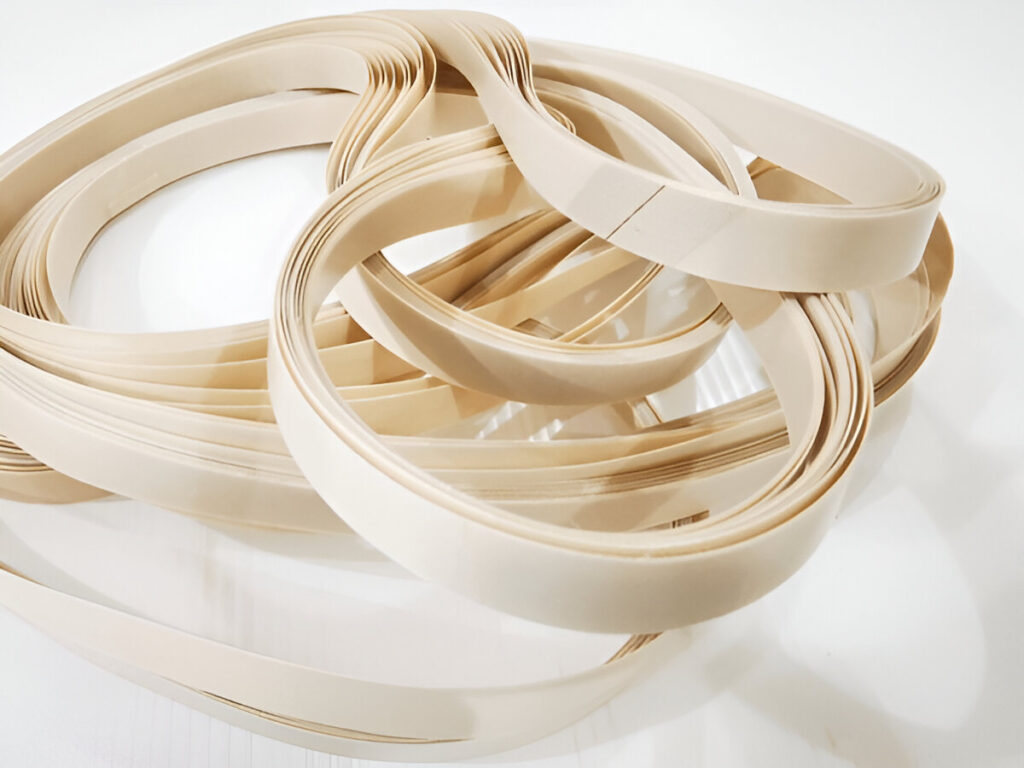Learn what a PU cord is, how it’s used across industries, and why it’s a preferred material in modern applications like conveyors and 3D printing.
A PU cord is a flexible, round belt made from thermoplastic polyurethane. Known for its durability and wear resistance, it is widely used in industries like packaging, textiles, and 3D printing. Similarly, the Polyurethane Teflon Belt is a high-performance solution used in conveyor systems and precision machinery due to its unique thermoplastic properties. This blog explains their types, applications, and benefits.
What is a PU Cord?
A PU cord is a round, thermoplastic belt made from polyurethane (PU). Known for its flexibility, strength, and resistance to wear, a PU cord is used in various mechanical and industrial systems. These cords are often installed in drive applications or conveyor systems where smooth movement, high performance, and reliability are necessary.
PU cords are particularly popular because they can handle high tension, resist abrasion, and operate in extreme temperature environments. They are also known for their resistance to oils, grease, and some chemicals, making them suitable for demanding industrial environments.
Applications of PU Cord
The PU cord is widely used in the following industries:
- Conveyor Systems: PU cords are frequently used in material handling setups. Their strength and flexibility allow them to move goods efficiently in assembly lines or packaging units.
- Textile Machinery: These cords offer the elasticity required in various textile machines for smooth and consistent operation.
- 3D Printing: PU cords and related components are used in motion systems within 3D printers for precision and durability.
- Automotive Industry: They are used in small machinery and devices requiring drive systems that withstand constant use and environmental factors.
- Packaging Machines: PU cords can withstand repetitive operations and work effectively in high-speed packaging equipment.
- Fitness Equipment: Some gym machines utilize PU cords for tension and smooth movement.
Types of PU Cord
PU cords are available in different types based on size, hardness, and application:
- Solid PU Cord: The most common type used in standard conveying and drive operations. It offers excellent wear resistance.
- Hollow PU Cord: Lightweight and easier to splice. Often used where frequent belt changes are needed.
- Textile Reinforced PU Cord: Includes additional strength from embedded fabric layers. These cords are used in high-tension environments.
- Rough Surface PU Cord: Designed to offer better grip in certain conveyor applications.
- Colored PU Cord: Helps in visual identification or aesthetic requirements in industries like packaging or consumer products.
Each of these types has specific use cases based on system requirements. For instance, hollow PU cords allow for faster installation, while reinforced types support more demanding loads.
What is a Polyurethane Teflon Belt?
A Polyurethane Teflon Belt is a hybrid material belt that combines the flexible and strong characteristics of polyurethane with the low-friction surface of Teflon. These belts have thermoplastic properties, which means they soften under heat and harden when cooled, allowing for easy welding and customization.
Thermoplastic properties make Polyurethane Teflon Belts ideal for use in high-speed and high-precision applications. They can be shaped or joined as needed, making them versatile and cost-effective over time.
These belts are commonly used in:
- Conveyor systems for transporting delicate or sticky materials, thanks to the non-stick surface of Teflon.
- 3D Printing mechanisms where precision and smooth movement are critical.
- Packaging machinery where both strength and clean release properties are required.
The combination of polyurethane’s elasticity and Teflon’s non-stick surface provides a belt that is both durable and highly efficient.
Benefits of PU Cord and Polyurethane Teflon Belt
The advantages of using a PU cord and Polyurethane Teflon Belt are numerous:
- Durability: High resistance to wear, chemicals, and temperature.
- Flexibility: Can bend and stretch without breaking, perfect for dynamic systems.
- Low Maintenance: Long-lasting performance reduces downtime and replacement costs.
- High Load Capacity: Handles both light and heavy materials with ease.
- Ease of Installation: Especially true for thermoplastic materials that can be welded on-site.
- Non-Marking Surface: Ideal for applications involving sensitive or delicate goods.
These benefits make PU cords and Polyurethane Teflon Belts a top choice across industries looking for long-term performance and reduced operational costs.
Summing Up
A PU cord is a reliable and efficient component in many mechanical and industrial systems. With different types available and benefits like flexibility, strength, and chemical resistance, it plays a critical role in modern manufacturing and conveying applications. Similarly, the Polyurethane Teflon Belt, with its thermoplastic properties, enhances productivity in systems requiring smooth and non-stick surfaces, like 3D printing and conveyor systems. These products are essential types of industrial belts, offering performance and durability in high-demand environments.
For high-quality PU cords and Polyurethane Teflon Belts that meet industrial standards, trust Jigna Sales. At Jigna, we specialize in providing premium PU cords and Polyurethane Teflon Belts. Our team delivers tailored solutions with precise specifications, fast delivery, and expert support for packaging, conveyors, and 3D printing industries.
Don’t settle for less—choose Jigna Sales for PU cords and Polyurethane Teflon Belts that outperform. Reach out now and power your operations with precision and durability like never before!



